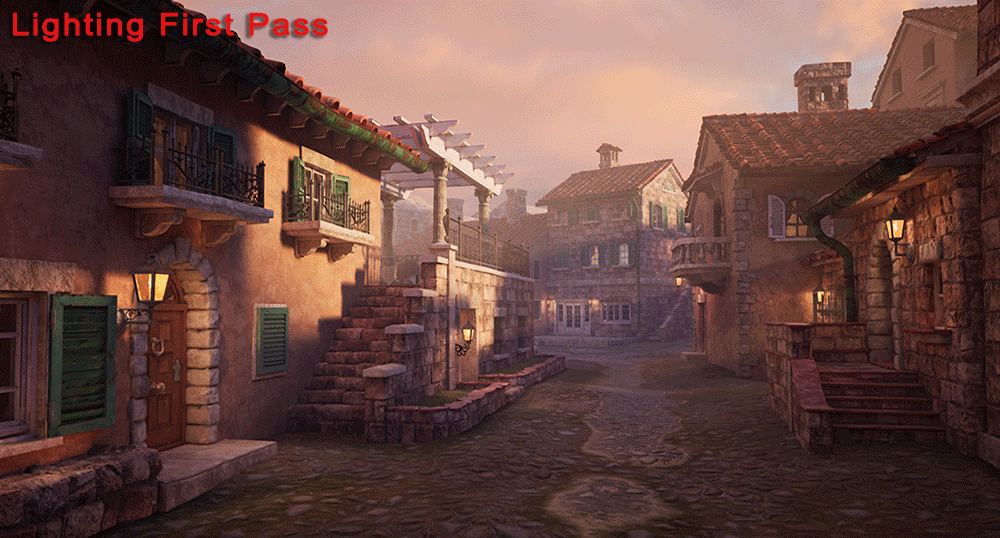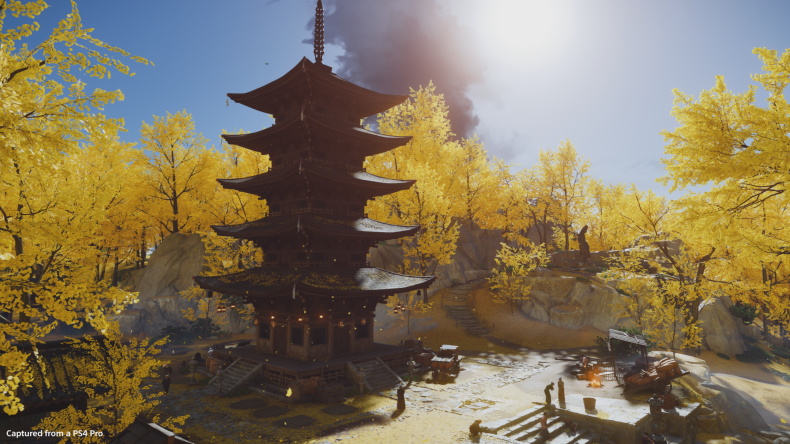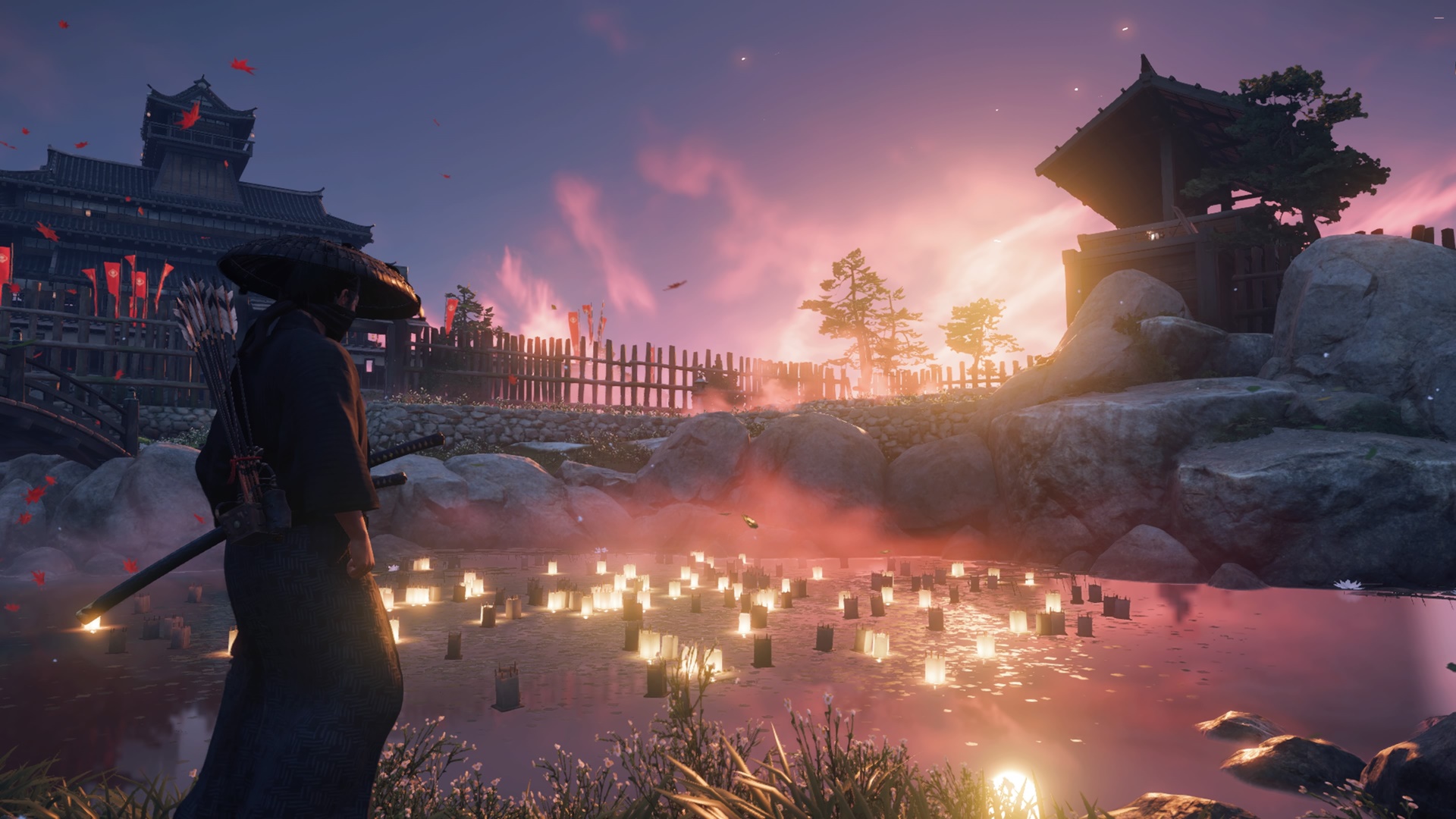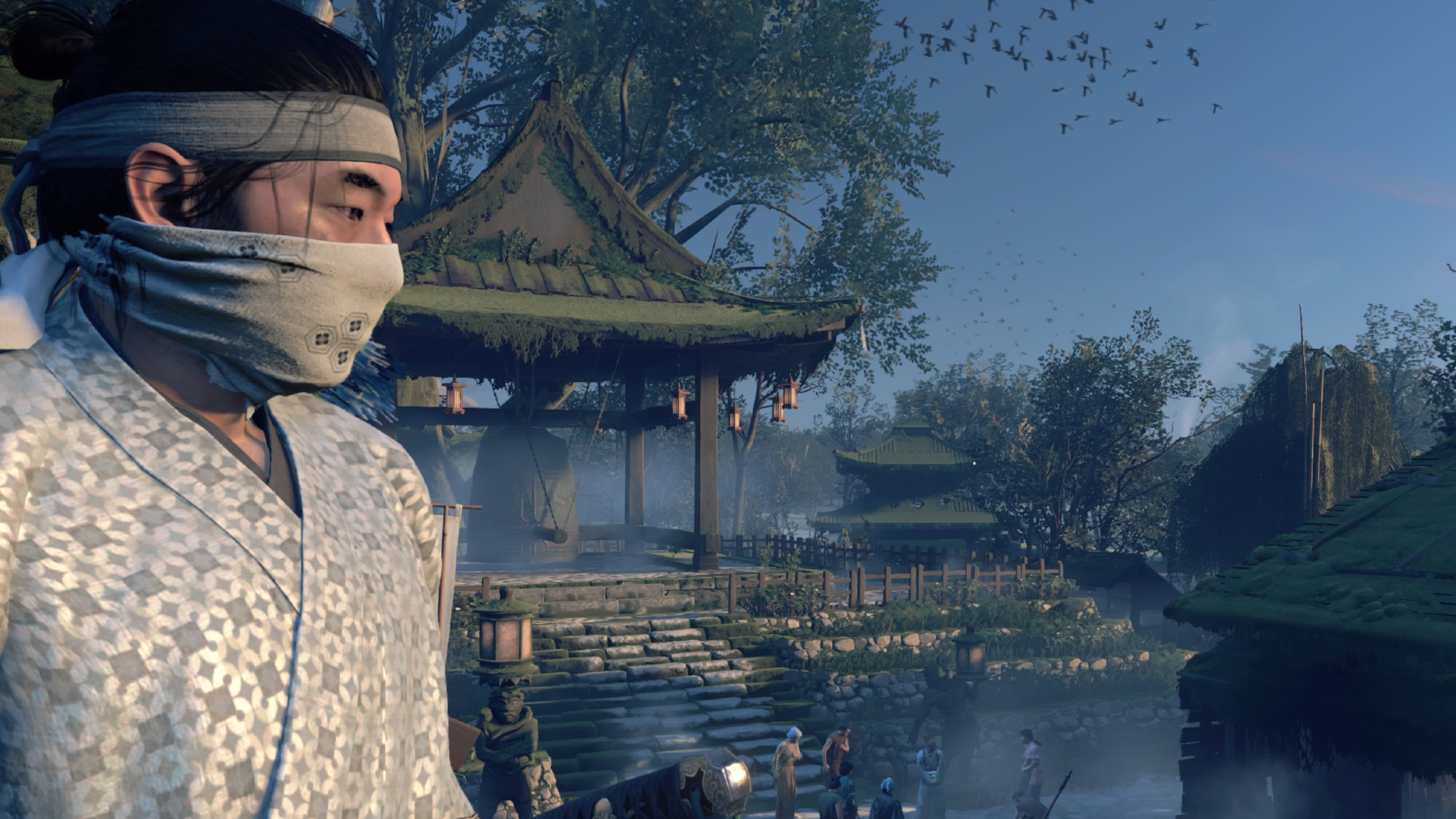James Brisnehan – Italian Village Link

(Brisnehan, 2020) (Figure 5)
“James Brisnehan discussed in great detail his huge UE4 project Villaggio Toscano talking about level design and assembly, modeling in Maya, texturing with Substance tools, foliage creation, lighting, and polishing.” (Brisnehan, 2020)
What it is?
James created an Italian village scene in the Unreal Engine. The skills he worked on include level design, 3D modeling, texturing in Substance Painter, Foliage, detailing and decorating the scene, and lastly, lighting and polishing the scene. He was studying Game Design and wanted to gain enough skills to make him employable and demonstrate industry standard work. In the article, he explains his thought and technical process of creating this level in Unreal and you can visualize the progress through the imagery he provides.
What is the artist’s style/ inspiration?
The artist clearly has a talent for natural outdoor scenes, as proven in the level of quality in his work. In his previous work, he created a Bonsai tree and a Merlin’s Cave scene. Both contain strong natural elements and assets such as trees, architecture, and photographic composition. The artist’s style is very bold and creative. This project was inspired by small Italian towns with cute, romantic architecture. It has a very art nouveau style with elegant and feminine themes as featured in the signage, props, and colors.
What exactly will you learn from it and how will it help with your project?
From this case study, I can see the technical and artistic progress and development for a similar project to mine. The final output/ artifact has a similar level I aspire to recreate in my work. This project allows me to know and understand the steps required to get to the final product, as well as setting a visual goal for me to work towards. I can also learn the industry level of skill required for a project like this, and how it measures up to industry tools/ quality.
What do you like/ dislike about this?
I really like the post-processing and lighting in this project, the soft, warm lighting effectively complements the scene and creates a romantic aura within the level design. I love the realistic and impressive detail and quality of the 3D assets, especially that they were made by the artist as well. It ensures that the assets match the desired aesthetic and bring history and life to the level. To add a cinematic touch and to creatively feature all of the hard work that has gone into the project, the artist could incorporate video into the article by making a cinematic sequence with audio to bring the visuals and audio together for an even more interesting experience and a more intense connection with the artists work.
Adam Rzatkowski– Operation Claymore Link

(Rzatkowski, 2020) (Figure 6)
“Adam Rzatkowski discussed in great detail the production of his UE4 environment Operation Claymore and the mindset he re-approached the initially unsuccessful project with.” (Rzatkowski, 2020)
What it is?
The artist Adam Rzatkowski created a scene in Unreal using a new approach, he did a lot of research on the building and architecture. He also used his skills in 3D modeling to create his own 3D assets for the scene, such as the building and surroundings. He also worked on the textures in Substance Painter and used Blender for his 3D modeling.
What is the artist’s style/ inspiration?
The architecture is the main focus of the artist’s work, Adam’s work is strongly based on 3D modeling and creating the main assets. Some of his previous work includes a Hobbit Hole building, a futuristic sci-fi scene, and a space leaf blower. The Operation Claymore project is inspired by a World War 2 commando raid carried out over the area of Lofoten, Norway. The landscape is inspired by a winter mountain/ lakeside environment.
What exactly will you learn from it and how will it help with your project?
This case study is relevant to my project as the artist has a very similar approach to me, and uses the same software I will be using for my project. Such as Blender, Substance Painter and Unreal. I like this project by Adam because he explains his thought process and the struggles he has faced with his work. He also includes a project reflection which helps give me a personal and informative understanding of the struggles I may have for this project.
What do you like/ dislike about this?
I like the use of directional and point lighting to add more detail to the scene, as it looks different at different times of the day, therefore representing reality. I really like the still renders for this scene, the photographic composition is very complementary to the asset placement, making it look aesthetically appealing and the snowy theme suits the building architecture nicely, creating a unique element to the scene. I also love the colors in the sky as they are subtle yet beautiful.
Speed Environment – Winter Forest Cabin – Unreal Engine 4
(Studios, 2019)
“Time lapse of an environment created inside Unreal Engine 4 by 3d artist Tom Adams. Created using assets from the VR title Unhallowed: The Cabin.” (Studios, 2019)
What it is?
The artist shows the process of building a cabin scene set at night, through the form of a timelapse video, he said it took him around 3 hours to make, which shows he is highly skilled in the software.
What is the artist’s style/ inspiration?
Tom Adams has previously worked on 3D models such as scene props like old books, street modular buildings, coke cans, and more. His work is typically based on street props, which makes this scene unique for him. His style focuses mainly on small details and bringing props to a scene to complement the aesthetic.
What exactly will you learn from it and how will it help with your project?
From this project, I can specifically take the artist’s technique to record his process to visualize the technical and artistic steps taken to reach his desired result. I also really like the use of height fog and light post-processing to get the soft glow and add depth and mystery to the scene. I also learned how to create a pond/ lake in Unreal from watching how the artist works.
What do you like/ dislike about this?
The most appealing aspect of this scene is the power of the lighting. The soft glow emerging from the inside of the building, shining out onto the pond and the mysterious fog creating a magical illusion. The artistic skill in this project is very impressive as the scene is simply stunning. The asset placement allows for effective photographic composition and height difference adds variety. I like that the artist recorded the whole process and uploaded it as a timelapse video, this allows me to see the steps required to get to the finished artifact.
Ghost of Tsushima- Game- (PlayStation, 2020)

(Figure 7)

(Figure 8)

(Figure 9)

(Figure 10)
“Tsushima is on the brink of destruction. In the wake of a crushing defeat at the hands of ruthless Mongol invaders, noble samurai Jin Sakai must sacrifice everything to protect what’s left of his home and people. As he embarks on an epic adventure for the freedom of Tsushima, he must set aside samurai traditions, embrace unconventional methods, and forge a new path—the path of the Ghost.” (PlayStation, 2020)
What it is?
Ghost of Tsushima is a game by Play Station which incorporates Japanese architecture. The visual detail and quality of this game represents beauty due to the impressive level design and props/assets.
What is the artist’s style/ inspiration?
The style of this game is strongly inspired by Japan. Japanese temples and architecture, colorful forests, soft lighting such as lanterns and candles.
What exactly will you learn from it and how will it help with your project?
I am inspired by the artistic elements of this scene, such as the Japanese assets, nature elements, soft lighting which I intend on incorporating in my work.
Leave a comment